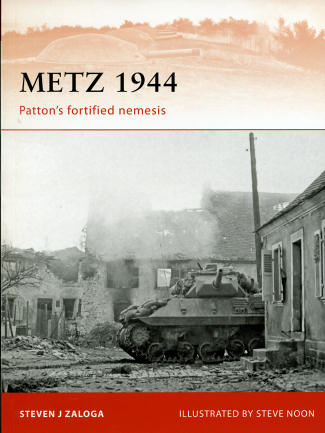 To many who
are interested in WWII, it seems that when Patton was given a command, it moved
on with great speed, pushing aside all obstacles in its path. Well, sort of.
Like all wars, WWII was as much a battle of supplies and resources as it was
equipment and generals.
To many who
are interested in WWII, it seems that when Patton was given a command, it moved
on with great speed, pushing aside all obstacles in its path. Well, sort of.
Like all wars, WWII was as much a battle of supplies and resources as it was
equipment and generals.
After the big breakout from Normandy, Patton's Third Army
moved so far and so fast that it quickly exceeded its ability to be supplied.
Once it solidified the front, other priorities demanded many of Patton's units
and those were moved up to what was considered to be the more important part of
the western front battles and that was north with Montgomery. This was becaust
Montgomery was having a very tough go of things and his advances were minimal at
best.
Meanwhile, Patton was stopped just outside Metz and its
fortifications, many of which were part of the French Maginot line. Without the
manpower or equipment he previously had, Patton found the fortifications around
Metz to be a very tough nut to crack. Though the German units were pretty well
depleted, they had the advantage of a shorter supply chain, meager though it
was, and the forts that many Allied commanders had written off as being a push
over.
It turned out not to be the case at all. Despite not having
top quality troops, the Germans used these fortifications very much to their
advantage and completely stopped Patton's forward progress. Adding in the
unseasonably wet fall/early winter to the mix meant that tanks had to stay on
hard surface roads or be stuck in the quagmire. The Germans also had a lot of
field artillery, much of it already zeroed into to river crossings and road
crossings. This was not helped by Patton's lack of adequate artillery. in fact,
most of the guns used by Patton's troops were captured German guns and
ammunition, something I found to be pretty amazing stuff. It took Patton almost
four months, from very early September to mid December to finally push through
the few miles around Metz.
Author Steven J. Zaloga tells the story of the battles around
Metz, providing a preamble of events leading up to the campaign, a look at the
commanders of both sides and the men under their command. Then there is an
inspection of the plans of both sides. The 'meat' of the volume is next with the
various battles, mostly occurring around various forts in the area. Finally,
introspection on how the battle went, what was learned from it, and how it
affected future events. There is also a look at the battlefield today. All of
this is superbly illustrated with period photographs and the artwork of Steve
Noon, whose work has graced literally hundreds of books over the years.
If you want insight into the most difficult campaign fought
by George Patton or
just a fascinating read, then this is the book for you. I thoroughly enjoyed
reading it and I'm sure you will as well.
April 2012
For more on the complete line of Osprey books,
visit www.ospreypublishing.com. In the US, it is
Osprey Direct at 44-02 23rd St, Suite 219, Long Island City, NY 11101., where you can
get a catalogue of available books.
If you would like your product reviewed fairly and quickly, please contact
me or see other details in the Note to
Contributors.
 To many who
are interested in WWII, it seems that when Patton was given a command, it moved
on with great speed, pushing aside all obstacles in its path. Well, sort of.
Like all wars, WWII was as much a battle of supplies and resources as it was
equipment and generals.
To many who
are interested in WWII, it seems that when Patton was given a command, it moved
on with great speed, pushing aside all obstacles in its path. Well, sort of.
Like all wars, WWII was as much a battle of supplies and resources as it was
equipment and generals.